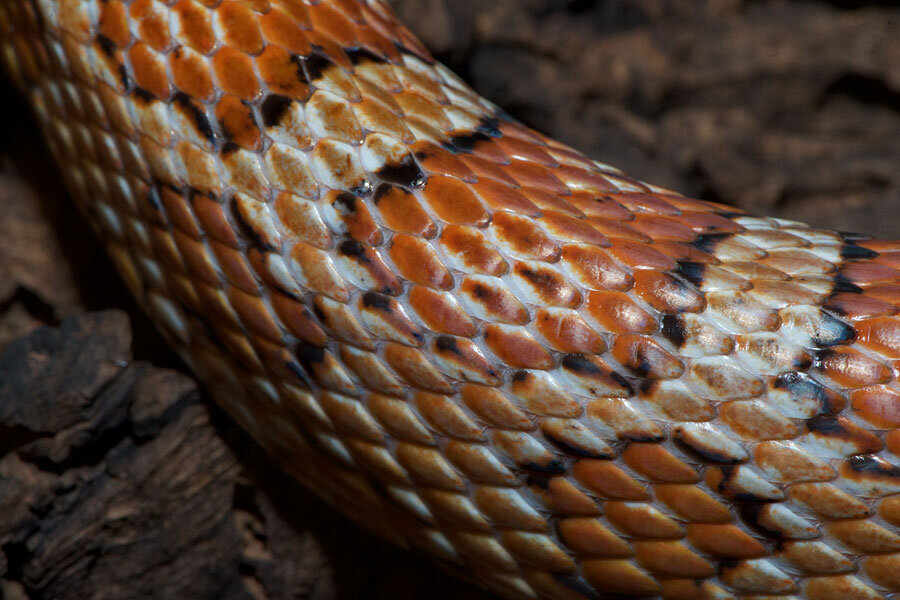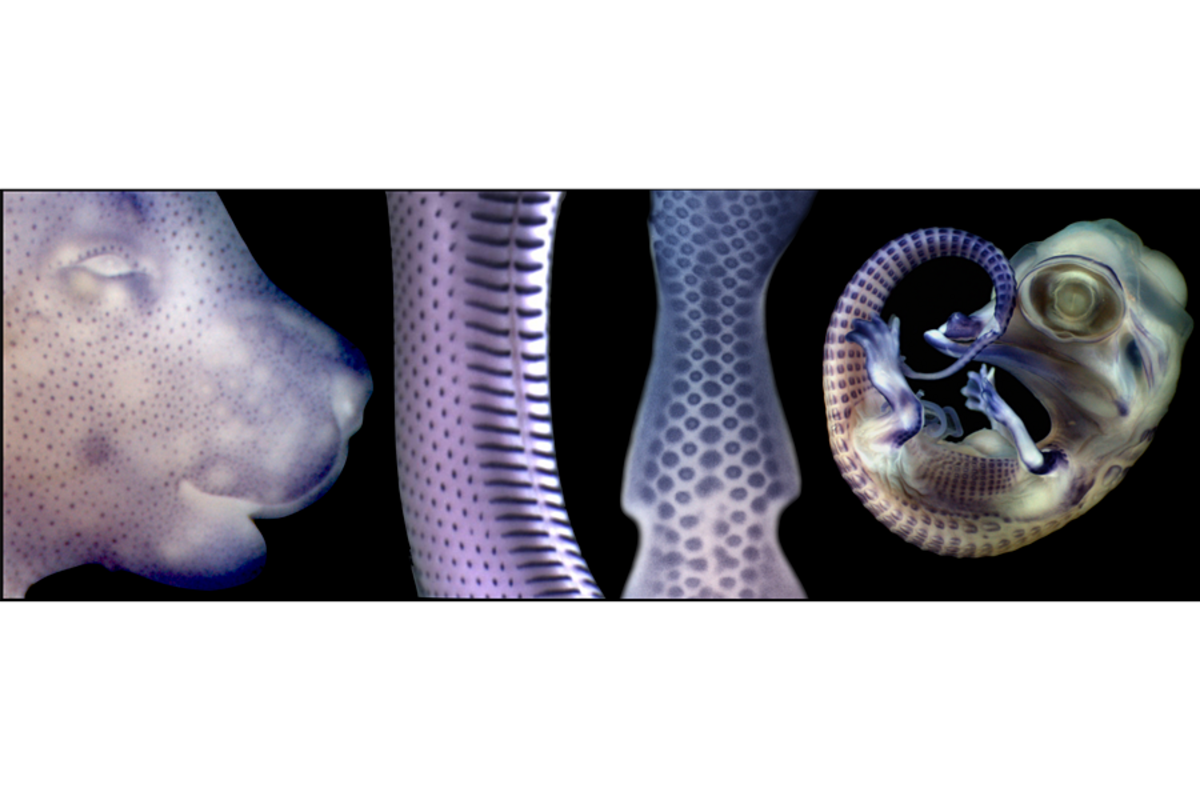Feathers, hair, and scales: Do they share a common ancestry?
Loading...
A bird's feathers, a reptile's scales, and a mammal's hairs may seem like very distinct features, but these skin appendages may come from common origins, say scientists.
The mechanism behind the embryonic development of feathers, reptilian scales, and hair is remarkably similar, according to a paper published Friday in the journal Science Advances. This finding suggests that these distinct appendages have their roots in a common ancestor of these three diverse lineages.
"This doesn't imply at all that feathers evolved from hair or that scales evolved from hair or that hair evolved from scales, et cetera," cautions Richard Prum, an ornithologist at Yale University who was not part of this study but who has studied these same developmental structures.
"They are homologous as appendages," he explains in an interview with The Christian Science Monitor, in that these features share a developmental origin. "They all use the same initial signaling system to create the place where something grows out of the skin, which is more subtle."
So what exactly is it that feathers, scales, and hairs share?
During embryonic development a signaling system tells the skin of an organism to start readying a location to develop an appendage or, as Dr. Prum puts it, it's a mechanism that "decides to grow a thing at a place."
That's what Prum's own research, published in 2015, found occurs in all three groups. But it doesn't stop with a signaling system.
A hair, scale, feather, or even a tooth, grows out of an anatomical structure called a placode that forms in the top layer of the skin. When the signal is sent to a particular location in the skin to form a placode, the top layer of the skin begins to thicken in that place, as columnar cells that divide more slowly than normal form.
Scientists had spotted these placodes associated with feather and hair development in bird and mammal embryos, Michel Milinkovitch, one of the study authors and an evolutionary geneticist at the University of Geneva, tells the Monitor in an interview. But finding these structures in scaly reptiles was proving more of a challenge.
"The problem is that birds and mammals are not sister groups," Dr. Milinkovitch says. Mammals and reptiles diverged long before birds arose from the same lineage as reptiles. So, for example, "if you take a sparrow, it's more closely related to a crocodile than to a mouse."
Because of this evolutionarily distant relationship, scientists began to muse that perhaps placodes evolved in birds and mammals independently, in a sort of convergent evolution scenario. Or, others suggested, perhaps placodes did exist in the common ancestor of these lineages, but reptiles lost the feature over time.
Prum's team found that the same genes were involved in signaling for the development of these skin appendages, even for scales in reptiles. "That was the beginning of the proof that maybe these things are homologous," Milinkovitch says.
So Prum and his colleagues proposed that a placode is "not just an anatomical feature, it's an information center, and that that is the appropriate definition," Prum explains to the Monitor. That would mean that scaly reptiles, birds, and mammals all have the same mechanism underlying their distinctive skin appendages, even if the physical expression of a placode didn't exist.
But it does, says Milinkovitch. "We found the anatomical placodes" in reptile embryos, from snakes to lizards to crocodiles.
Blink and you'll miss it?
Why were Milinkovitch and his colleague, Nicolas Di-Poï, able to spot these placodes when other teams couldn't?
In mammals, for example, placodes appear at the same time in embryonic development, Milinkovitch explains. "So if you look at the right time, you can look anywhere on the body and you will find the placodes."
But that's not the case in reptiles. Placodes will develop at different times on different parts of a reptile's body, and they don't stick around in an identifiable form for long.
"It's anatomically subtle," Prum says.
"This is something we've predicted," he says of the presence of placodes in scaly reptiles. "My only regret is that I wish I'd done it myself."
The "novelty" of the new paper "is to beautifully show the presence of those actors during squamate [scaly reptile] scale formation," French cell biologist Danielle Dhouailly, who was not part of this study but whose own research has focused extensively on skin appendages, says in an email to the Monitor.
Appendage ancestry
"Our data shows that all these structures – hair, feathers, and scales – are the descendants of a common structure that was present in the ancestor of all amniotes," Milinkovitch asserts.
Like Prum, Dr. Dhouailly warns about oversimplifying that relationship. This doesn't mean "a common phylogenetic origin of those appendages," she says. "This means the independent parallel co-option of the same set of signaling pathways."
Or as Prum puts it, "The event of becoming a hair was not the same event as becoming a feather, an organ becoming a feather. But they didn't start each of them from scratch. They started using something, a capacity in the skin, to say, let's start a thing here."
"And that is what's common between all of them: the placode," he explains.
And that decision center doesn't just dictate where a hair, scale, or feather should emerge from the skin, it also transmits information about how much space should be between each appendage or any patterning, like the swirls in the hair on top of humans' heads or in the fur of a dog, Prum says. "These kinds of things, the decision to make it, and the patterning over the body, are stuff that apparently are shared all through these amniotes that evolved in the amniote ancestor."
And that basal amniote, the last common ancestor of reptiles, birds, and mammals, lived about 300 million years ago.
Scientists have had little to go on when investigating the origins of these skin appendages because, as Milinkovich says, "it's very difficult to fossilize the skin."
So research has focused on the structure and mechanisms behind feathers, scales, and hairs on a molecular level in living animals in order to "understand a bit better the mechanisms that generated the diversity and complexity of the living world."







